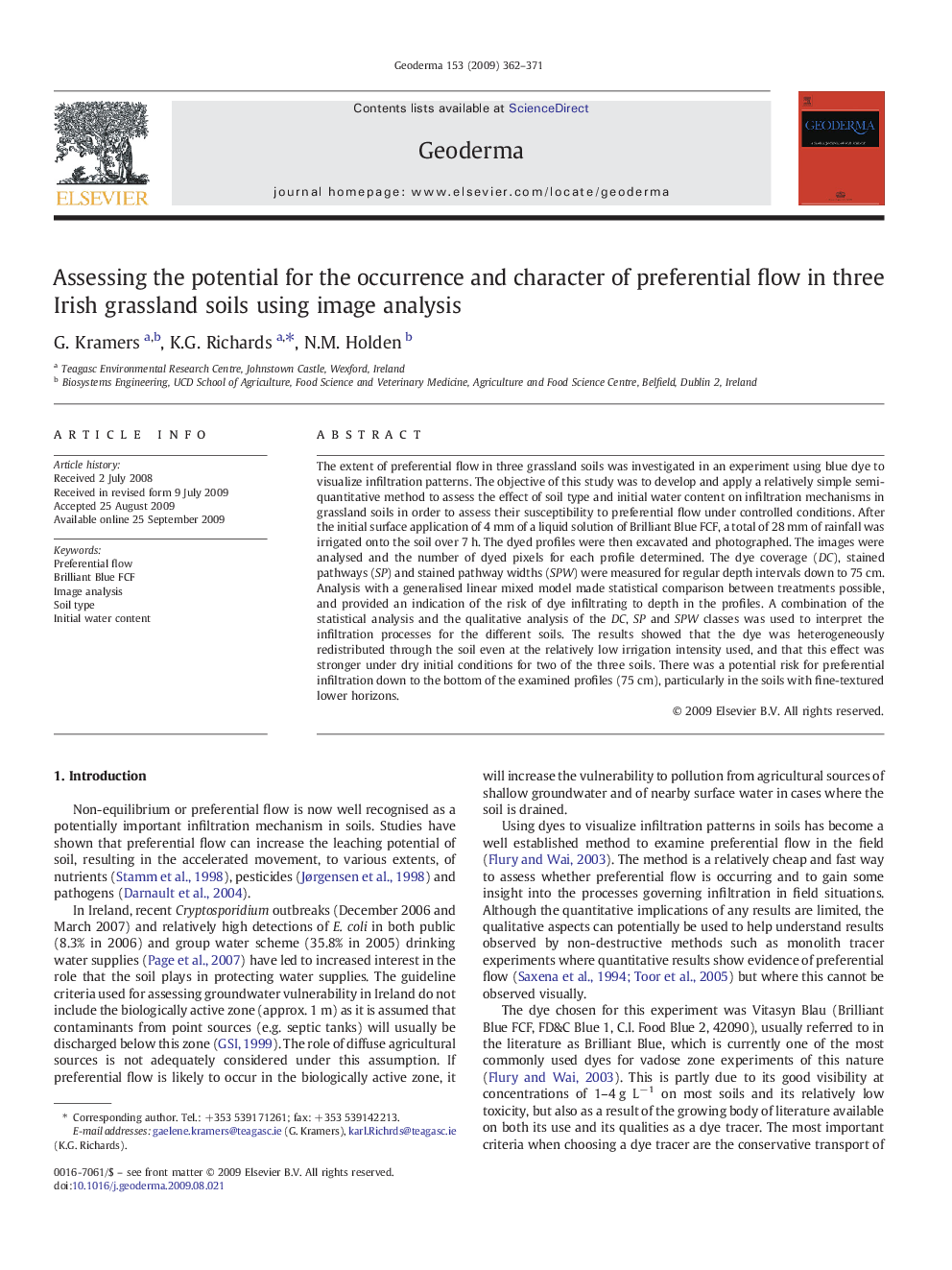| Article ID | Journal | Published Year | Pages | File Type |
|---|---|---|---|---|
| 4574812 | Geoderma | 2009 | 10 Pages |
Abstract
The extent of preferential flow in three grassland soils was investigated in an experiment using blue dye to visualize infiltration patterns. The objective of this study was to develop and apply a relatively simple semi-quantitative method to assess the effect of soil type and initial water content on infiltration mechanisms in grassland soils in order to assess their susceptibility to preferential flow under controlled conditions. After the initial surface application of 4Â mm of a liquid solution of Brilliant Blue FCF, a total of 28Â mm of rainfall was irrigated onto the soil over 7Â h. The dyed profiles were then excavated and photographed. The images were analysed and the number of dyed pixels for each profile determined. The dye coverage (DC), stained pathways (SP) and stained pathway widths (SPW) were measured for regular depth intervals down to 75Â cm. Analysis with a generalised linear mixed model made statistical comparison between treatments possible, and provided an indication of the risk of dye infiltrating to depth in the profiles. A combination of the statistical analysis and the qualitative analysis of the DC, SP and SPW classes was used to interpret the infiltration processes for the different soils. The results showed that the dye was heterogeneously redistributed through the soil even at the relatively low irrigation intensity used, and that this effect was stronger under dry initial conditions for two of the three soils. There was a potential risk for preferential infiltration down to the bottom of the examined profiles (75Â cm), particularly in the soils with fine-textured lower horizons.
Related Topics
Physical Sciences and Engineering
Earth and Planetary Sciences
Earth-Surface Processes
Authors
G. Kramers, K.G. Richards, N.M. Holden,
